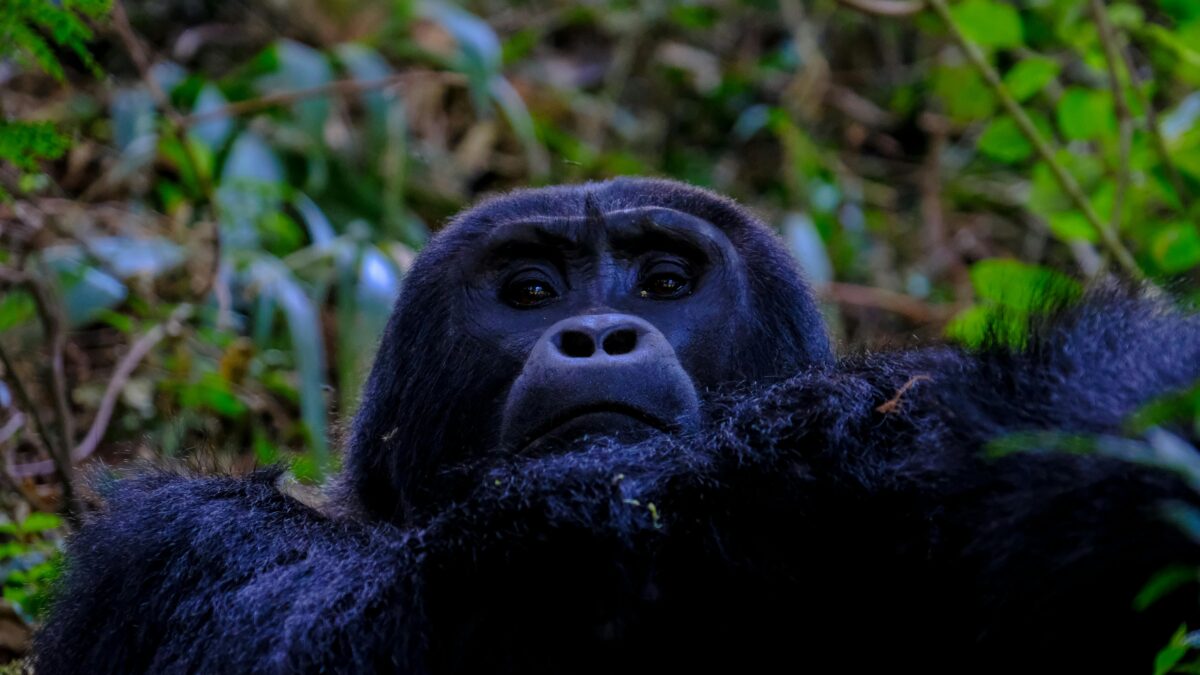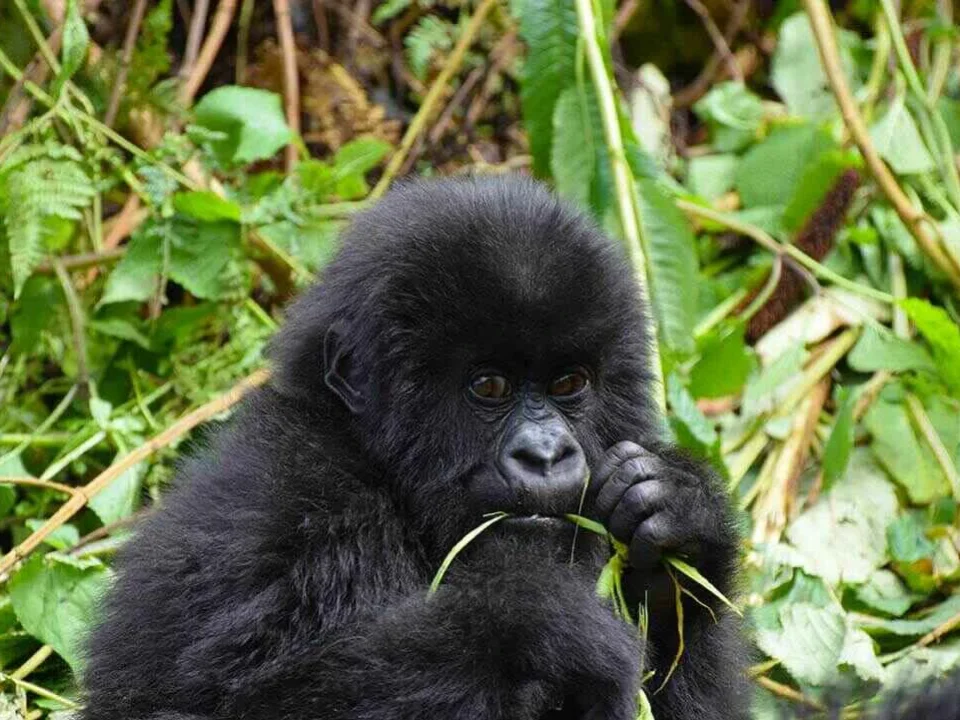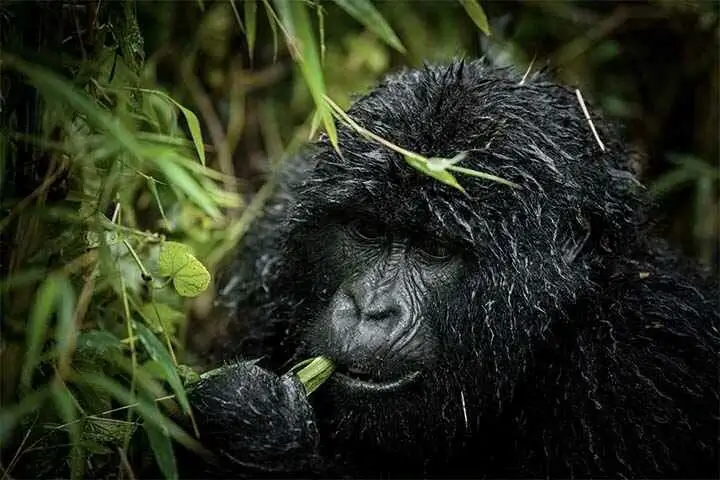
Ultimate Guide to Gorilla Habituation in Bwindi Impenetrable Forest National Park
April 17, 2025
How to Prepare for a Birding Safari in Uganda
May 1, 2025If you’re dreaming of locking eyes with a wild mountain gorilla deep in a misty forest, there’s no better place to do it than Uganda. This East African gem is home to nearly half of the world’s remaining mountain gorilla population, protected in two main destinations: Bwindi Impenetrable Forest National Park and Mgahinga Gorilla National Park. These pristine habitats offer one of the most remarkable and transformative wildlife experiences available anywhere on Earth.
But how much does a gorilla trekking safari in Uganda cost? It’s a question many travelers ask before committing to this once-in-a-lifetime journey. The answer varies depending on how you travel, what level of comfort you choose, and the experiences you want to include. This guide breaks down the key costs involved so you can plan your gorilla safari with clarity and confidence.
The Gorilla Trekking Permit
The foundation of every gorilla trekking safari in Uganda is the gorilla permit. This is a government-issued pass that allows you to spend one unforgettable hour with a habituated gorilla family in their natural environment. As of 2024, the cost of a gorilla permit in Uganda is 800 US dollars for foreign non-residents. If you are a foreign resident living in East Africa with proper documentation, the fee is slightly reduced to 700 US dollars. For East African citizens, the cost is much lower, with permits available for 300,000 Ugandan Shillings.
The permit cost might appear steep at first glance, but it covers much more than just the hour you spend with the gorillas. It includes park entry fees, services of experienced Uganda Wildlife Authority (UWA) guides and rangers, and direct contributions to the conservation of the endangered species. Funds from permit sales help protect gorilla habitats, support anti-poaching efforts, and fund community development projects in villages around the parks. When you buy a permit, you’re directly contributing to wildlife conservation and sustainable tourism.
The Gorilla Habituation Experience
While standard gorilla trekking gives you an hour with the gorillas, Uganda also offers a special alternative for those seeking a more immersive encounter. The Gorilla Habituation Experience is available only in the Rushaga sector of Bwindi Impenetrable Forest and allows visitors to spend up to four hours with a group of gorillas that are in the process of becoming accustomed to human presence.
This longer experience comes with a higher price tag, currently set at 1,500 US dollars per person. It is designed for wildlife enthusiasts, photographers, researchers, or anyone wanting a more intimate and extended time in the presence of these magnificent primates. Because the groups are still semi-wild, the trek can be more unpredictable and physically demanding, but the reward is an unmatched connection with one of the planet’s most intelligent animals.
Reaching the Gorilla Parks
Uganda’s gorilla parks are located in the remote southwestern part of the country. While this isolation has helped protect the gorillas, it also means that getting there requires some planning—and additional cost.
Most travelers reach Bwindi or Mgahinga by road, departing from Uganda’s capital city of Kampala or from Entebbe International Airport. The drive takes between eight and ten hours, depending on road conditions and your final destination within the park. Road travel offers the chance to see more of the countryside, and you can stop at various points of interest along the way, such as the Equator monument or Lake Mburo National Park. Hiring a private safari vehicle with a professional driver-guide typically costs between 150 and 250 US dollars per day, with fuel adding an additional 200 to 300 dollars for the round-trip journey.
For travelers short on time or preferring more comfort, domestic flights are available from Entebbe to Kisoro or Kihihi airstrips, which are close to Bwindi. A one-way ticket costs between 300 and 450 US dollars per person. Although flying significantly shortens the travel time—taking only about an hour—it does increase the overall cost of your safari. After landing, you’ll still need to arrange a transfer to your lodge or the trekking trailhead.
Cost Considerations by Season
Uganda is a year-round destination for gorilla trekking, but your timing can impact both your experience and your wallet. The high season, which runs from June to September and from December to February, offers the best weather for trekking. Trails are drier and conditions are generally more favorable for forest hikes. However, this also means higher demand for permits, more competition for lodging, and fewer discounts.
In contrast, the low season—typically March to May and October to November—brings more rainfall but also offers lower prices. Tour operators and lodges often provide special deals during these months, and it’s easier to secure permits with shorter notice. Trekking in the rainy season can be more challenging due to slippery trails and limited visibility, but it also means lush scenery, fewer tourists, and a greater chance for solitude on the forest trails.
If you’re looking to reduce costs, the low season may be your best bet, as long as you’re prepared for wet weather and willing to embrace the adventure.
Additional Costs You Shouldn’t Overlook
Beyond the main expenses, there are several smaller but important costs that travelers should budget for. One of these is tipping. While not mandatory, tipping is a cultural norm in Uganda and is appreciated by guides, porters, and drivers. A typical tip for a UWA guide might range from 10 to 15 US dollars per person. Your driver or guide, especially on multi-day trips, should receive around 10 to 20 dollars per day. Porters who assist you during the trek also appreciate tips, often receiving 15 to 20 dollars for their support.
Hiring a porter is highly recommended, particularly if you’re carrying heavy gear or if the trek is long and strenuous. Many porters are local residents and former poachers who have transitioned into conservation-supporting roles. By hiring them, you not only lighten your load but also contribute directly to the local economy and conservation efforts.
You’ll also need to consider the cost of a visa. Most nationalities require a visa to enter Uganda. A single-entry Uganda tourist visa costs 50 US dollars, while the East African Tourist Visa—which allows travel between Uganda, Kenya, and Rwanda—is available for 100 US dollars. These fees are usually payable online through Uganda’s e-visa system before arrival.
Travel insurance is another essential expense. Because gorilla trekking occurs in remote, rugged terrain, it’s crucial to have insurance that covers medical emergencies, evacuations, and cancellations. The cost of coverage will vary depending on your provider, age, and trip length, but it’s a wise investment for peace of mind.
Lastly, don’t forget about vaccinations and medications. Yellow fever vaccination is required to enter Uganda, and you may also need protection against hepatitis A and B, typhoid, and tetanus. Malaria prophylaxis is strongly advised. Visit a travel clinic well in advance of your trip to ensure you’re fully prepared.
Booking Your Safari, What You Need to Know
While it’s possible to book your gorilla permit directly through the Uganda Wildlife Authority, the process can be cumbersome, especially for first-time visitors. Most travelers find it easier and more reliable to work with a local tour operator who can secure permits, plan the itinerary, and provide support on the ground.
It’s important to book your safari well in advance, especially if you plan to travel during the high season. Gorilla permits are limited to just eight visitors per gorilla family per day, and they sell out quickly. Reputable tour companies can help you check availability and reserve your spot months ahead of time.
When choosing a safari operator, look for companies that are licensed, experienced, and members of the Association of Uganda Tour Operators (AUTO). Read recent reviews, check social media profiles, and ask detailed questions about what’s included in the price. Be clear about cancellation and refund policies, especially in case of unforeseen changes in travel plans.
Uganda vs. Rwanda and Congo: Value for Money
If you’re exploring your options, it’s worth noting how Uganda compares to neighboring Rwanda and the Democratic Republic of Congo. Rwanda offers a more upscale and streamlined trekking experience, but at a significantly higher cost. Permits there are priced at 1,500 US dollars per person, nearly double Uganda’s rate. Rwanda’s trails are also shorter and more accessible, making them ideal for travelers seeking a less physically demanding experience.
The Congo offers the lowest permit prices, ranging between 400 and 500 US dollars, but political instability and logistical challenges make it a less popular choice for most travelers.
In terms of balance, Uganda stands out as the most affordable and authentic gorilla trekking destination in the region. It combines relatively low costs with excellent infrastructure, a strong safety record, and a wide range of tourism offerings.
Final Thoughts: Is It Worth the Price?
A gorilla trekking safari in Uganda may not be cheap, but it is undeniably worth every dollar. The emotional power of standing just a few feet from a mountain gorilla in its natural habitat is hard to describe—it’s humbling, exhilarating, and deeply moving. The cost of the experience includes much more than the hour you spend with the gorillas. It’s an investment in protecting a critically endangered species, supporting rural communities, and preserving one of the world’s last great rainforests.
Whether you’re a seasoned wildlife traveler or a first-time visitor to Africa, a gorilla trek in Uganda is an experience that will stay with you forever. With careful planning and the right tour operator, you can enjoy an extraordinary journey that is both life-changing and surprisingly accessible.
So, how much does a gorilla trekking safari in Uganda cost? It depends on how you travel—but no matter your budget, the rewards are priceless.




